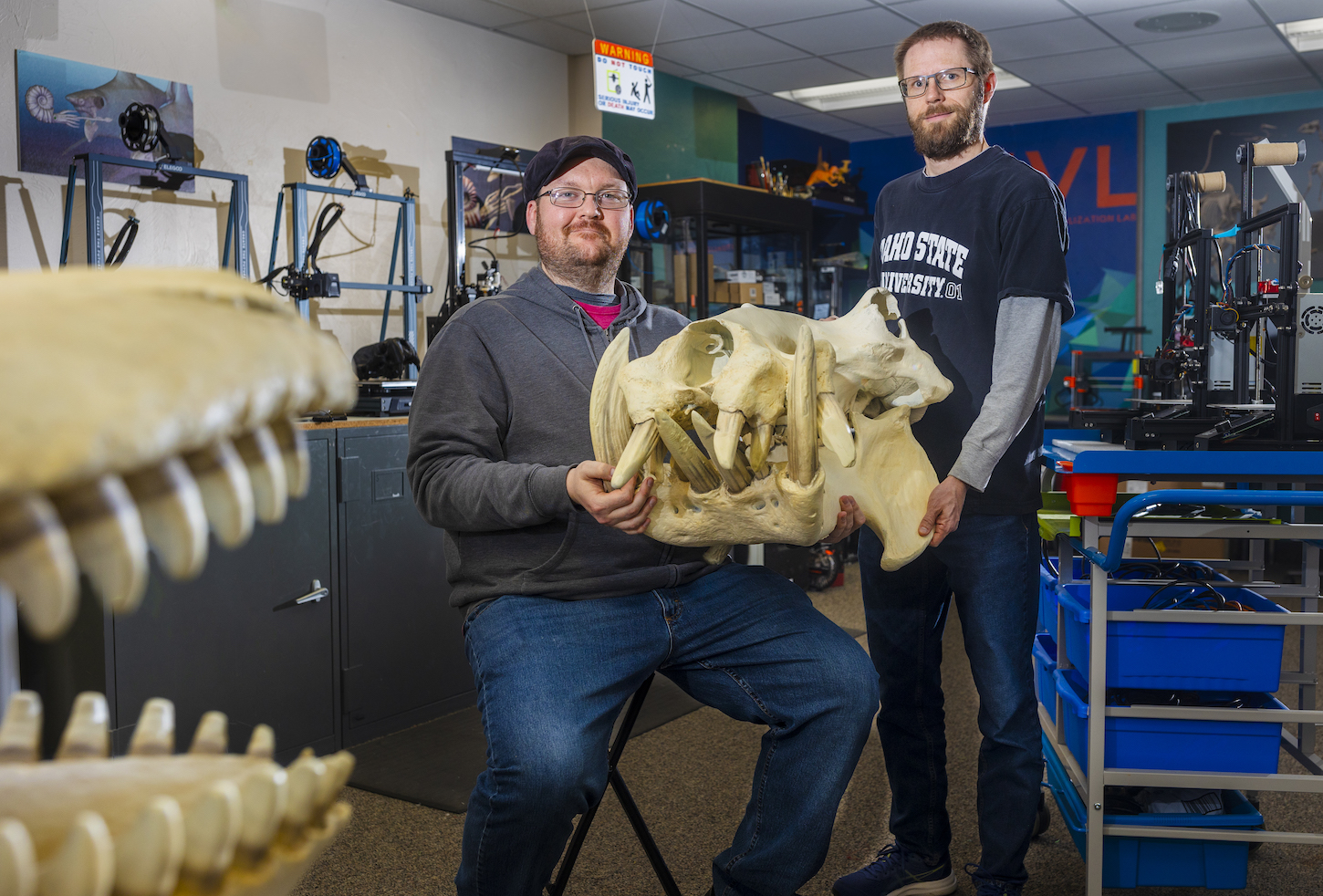Idaho Museum of Natural History adds Giant Skeletons to National 3D Collection
April 11, 2024

A zoologist is poring over a digital version of the skull of an Arctic wolf from her office in Arizona. Meanwhile, an artist notices the intricate details of a western diamondback on her screen in Vermont. While they’re hypothetical, each scenario is now possible thanks to the work of researchers at the Idaho Museum of Natural History and more than a dozen other institutions.
The project, called openVertebrate—oVert for short—is now home to roughly 13,000 digital specimens from across the animal kingdom. From the smallest lizards to some of the largest mammals in the seas, these specimens are available for anyone—scientist, hobbyist, artist, educator, or otherwise—to view and use online.
“Natural history museums preserve the Earth's record of biodiversity,” said Leif Tapanila, director of the Idaho Museum of Natural History and professor of geosciences at Idaho State University. “So much information is kept locked away in museum collections, so naturally, we're trying to protect it. The oVert project finds a way to make life's biodiversity more accessible to anyone.”
Using CT scanners, researchers from institutions including the University of Florida, Cornell University, University of Washington, Harvard University, and others took on the monumental task of digitizing specimens housed in museums around the U.S.
“Museums across the country have remarkable collections, especially of their regional plants and animals, that you might not find elsewhere,” Tapanila said. “As a State museum, the Idaho Museum of Natural History focuses on the Intermountain West. So we have an unparalleled sampling of life from our region that you simply can't find anywhere else.”
Now digitized, the specimens can be viewed inside and out and see its bones and tissues, without damaging them. Many of these specimens are being preserved using fluid in glass jars, and without the use of scanning technology, researchers would have to reach for a scalpel to get the same view.
“At IMNH, we have a variety of preserved reptiles, amphibians, and fish that are historic samples of life across the state, including the rubber boa, Great Basin rattlesnake, and the Idaho giant salamander,” explained Tapanila. “There are times when taking a tissue sample has value, but in general, we try to avoid destructive testing unless it's really necessary. Once that body is digital, the individual organs can be dissected 'virtually' on a computer, protecting the original material for posterity.”
But what if the specimen is too big for a CT scan? That’s when you call in the experts with the Idaho Virtualization Laboratory. Housed in the IMNH, the IVL is home to “state-of-the-art technology for imaging, virtualization, and simulation of material items, landscapes, and life.” Using handheld scanners, the IVL team digitally recreated the skeletons of the largest animals to be included in oVert, including a humpback whale.
“Working on the oVert project has been a great and beneficial experience,” said Tim Gomes, manager of the Idaho Virtualization Laboratory. “I have participated in scanning and processing thousands of bones of huge creatures, and it feels awesome to be a part of a project that is sharing these models we have made with the public. I love seeing all the fantastic projects and research coming from those who have used our models, and I look forward to future opportunities to do more."
A summary of the oVert team’s work was recently published in the journal BioScience.
“Since we started making digital scans of skeletons, we've had quite a few requests for models,” Tapanila said. “Whether it's a researcher studying the anatomy of a whale or an artist needing reference material for a sculpture, the 3D library of life we're making available through oVert will show up in society in countless ways. We're already using these models in some of our exhibits at the Idaho Museum of Natural History."
For more information on the ISU Department of Geosciences and Idaho Museum of Natural History, visit isu.edu/geosciences and isu.edu/imnh.
Categories:
